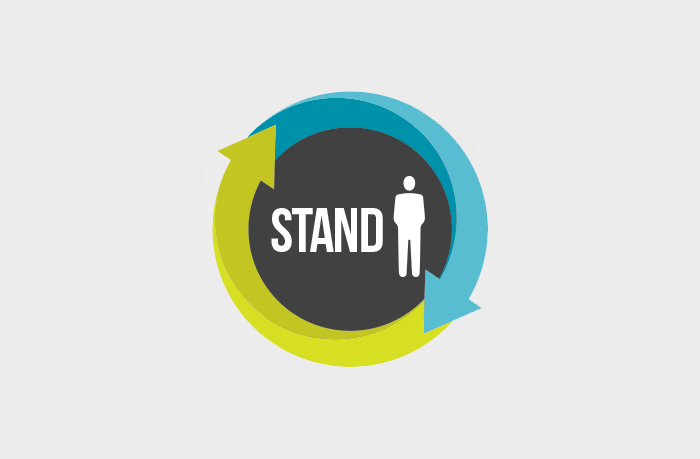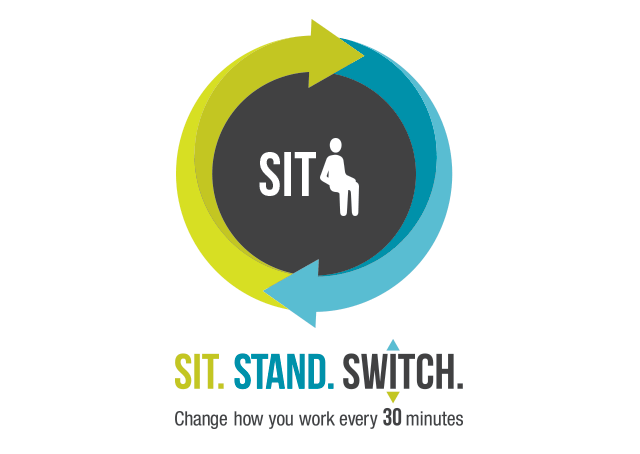
MoveMore Blog
The latest in workplace wellness

Switch it up, with a regular sit-stand routine

Are you a deskbound worker? Chances are that for some of you, your health may be compromised and your fitness de-conditioned due to prolonged sedentary time. Most ergonomics and human factors experts agree that the human body is designed to move and cycle through a balance of postures.
In other words? You need to periodically sit down, stand up and move around throughout the day. How much may depend on your life and workstyle.
Research suggests that sitting for extended periods slows your metabolism and raises your risk for obesity, cancer, diabetes, heart disease and early death. But as any retail worker or waiter can tell you, being on your feet all day can be hard on your circulatory system, legs, feet and back too. The idea is balance. By switching from one posture to another frequently, you automatically mitigate the risks associated with either one on its own.
So how should you begin to switch it up?
This is where the sit-stand switch comes into play. As a benchmark, we recommend changing your position every 30 minutes.
Start slowly. No need to overdo it and suffer additional physical stress and strain. Stand for short periods – 5 minutes per hour, then 10 minutes, and so on until you work up to longer intervals throughout the workday.
Need a little more guidance? Here are some examples of an hourly sit-stand routine, which could be repeated during your workday:
- Do 30 minutes of sitting while computing, then 30 minutes of standing in a meeting or reviewing mail
- Do 20 minutes of sitting working on a report, and then 10 minutes of standing reading email and 30 minutes of doing some coding or editing
- Do 30 minutes of sitting while writing an article, then 20 minutes of standing on the phone and 10 minutes of stretching or filing.
There are endless formulas for creating a mix of sitting and standing postures that accommodate many environments, occupations, and workflows. Use these as guidelines only, meant to simply encourage you to sit less and stand more. It is worth noting that even small changes can make a big improvement in your biochemical and biomechanical picture.
There may be a few other areas that you need to switch.
Whether sitting or standing, good posture and proper body mechanics are necessary. While sitting, avoid slumping forward, craning your neck out or dropping it down. While standing, keep the knee joint relaxed, not locked. Wear supportive shoes and cushion feet with a mat. Fidgeting is good, and if possible, make bigger movements such as light stretches at your desk.
To prevent falling back into sedentary bad habits, you might want to consider giving yourself regular reminders to change posture. For instance:
- Set a digital alarm or kitchen timer to ring at 20-30 minute intervals.
- Use a Fitbit or other wearable device that tracks activities and reminds wearers to move.
- Try an app such as SitStandCOACH or Rise & Recharge, that messages you to stand or to sit at intervals you’ve set.
- Consider creating or buying a sit-stand desk that allows you to easily switch between sitting and standing without interfering with work activity and productivity.
If you can train yourself to cycle through the sit-stand switch, you will gain the benefits of both postures. Plus, you’ll minimize the risks of metabolic, mental, and musculoskeletal strain. That’s a double-win, for your mind and body.
Relevant Posts
Stay in the know
Sign up and get the latest and greatest content from JustStand's MoveMore blog.